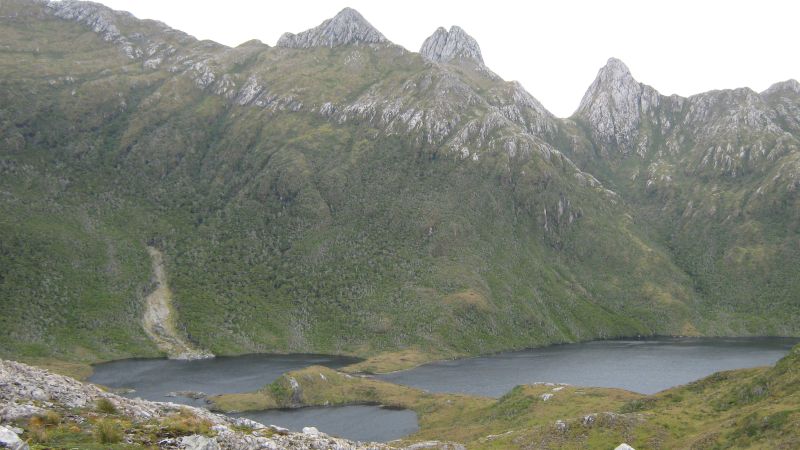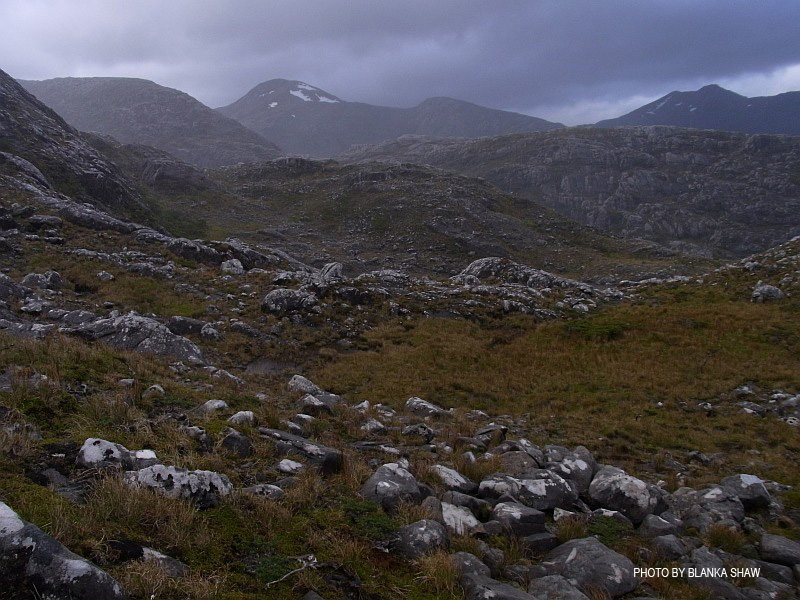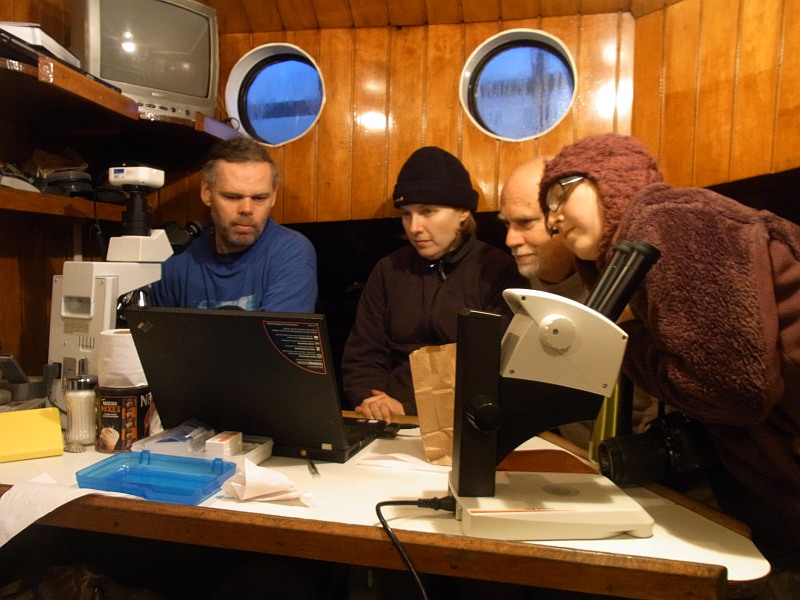From the Field: Bill Buck in Cape Horn
Posted in Bill Buck, From the Field, Science on February 10 2011, by William R. Buck
Ed. note: NYBG scientist and Mary Flagler Cary Curator of Botany, Bill Buck is currently on expedition to the islands off Cape Horn, the southernmost point in South America, to study mosses and lichens. Follow his journeys on Plant Talk.
February 1, 2011; Seno Courtenay, 54°37’S, 71°21’W
 The ship engines started about 6:30 a.m. By this point in our journey, this rouses no one from their bunks except the crew. However, as soon as the engines are cut off it means we have arrived at our next field site and everyone hurries up to breakfast. Every morning for breakfast there is fresh bread, sometimes baked, sometimes fried. It’s a great way to start the day.
The ship engines started about 6:30 a.m. By this point in our journey, this rouses no one from their bunks except the crew. However, as soon as the engines are cut off it means we have arrived at our next field site and everyone hurries up to breakfast. Every morning for breakfast there is fresh bread, sometimes baked, sometimes fried. It’s a great way to start the day.
 Mornings are mostly proving to have reasonable weather, but usually by 1-2 p.m. it starts to rain harder and the winds pick up. This morning we arrived in Bahía Murray on the east side of Isla Basket. The island is named for Fuegia Basket, the name Charles Darwin’s expedition gave to an indigenous young woman that they essentially kidnapped and took to England to “civilize.” The weather–just light continuous drizzle–was not an issue, and we all went ashore to collect. We split into a few groups to cover more habitats. Juan decided to try and reach a peak that rises to about 1600-1700 feet and took our satellite modem with him in an attempt to send out my daily blogs. He got within 50 feet of the summit but couldn’t continue because the rocks were steep and crumbling. Needless to say, the modem still couldn’t find a satellite.
Mornings are mostly proving to have reasonable weather, but usually by 1-2 p.m. it starts to rain harder and the winds pick up. This morning we arrived in Bahía Murray on the east side of Isla Basket. The island is named for Fuegia Basket, the name Charles Darwin’s expedition gave to an indigenous young woman that they essentially kidnapped and took to England to “civilize.” The weather–just light continuous drizzle–was not an issue, and we all went ashore to collect. We split into a few groups to cover more habitats. Juan decided to try and reach a peak that rises to about 1600-1700 feet and took our satellite modem with him in an attempt to send out my daily blogs. He got within 50 feet of the summit but couldn’t continue because the rocks were steep and crumbling. Needless to say, the modem still couldn’t find a satellite.
 The ascent was, nevertheless, worthwhile because of all the great mosses Juan found at those elevations that the rest of us didn’t reach. I first worked through a small, coastal southern beech forest in order to find the standard mosses that I have come to expect in this habitat. I then emerged into a Magellanic tundra and headed toward the mountains. Coming over a rise I came upon what I thought must be a fairly large lake. Only once I had reached its shore and tasted the water was I sure it wasn’t an arm of the sea. Later I learned that it was only the first of three lakes. We found quite a few mosses today which certainly have never been reported from this island.
The ascent was, nevertheless, worthwhile because of all the great mosses Juan found at those elevations that the rest of us didn’t reach. I first worked through a small, coastal southern beech forest in order to find the standard mosses that I have come to expect in this habitat. I then emerged into a Magellanic tundra and headed toward the mountains. Coming over a rise I came upon what I thought must be a fairly large lake. Only once I had reached its shore and tasted the water was I sure it wasn’t an arm of the sea. Later I learned that it was only the first of three lakes. We found quite a few mosses today which certainly have never been reported from this island.
 After talking to the captain, we decided to head directly to Seno Courtenay and then work our way back west in the upcoming days. From a map, it looked like the area should be a moss paradise, and indeed that impression was confirmed. As we headed down the westernmost arm of the sound, the mountains rose on all sides and the ships echo sonar (a tool that shows the water’s depth) saw no bottom. Every 100 yards or so a waterfall cascaded down to the sea. Despite the steady rain we all stood on the deck gawking like school children at the incredible scenery. Just how special it was was confirmed by the crew doing the exact same thing we were doing.
After talking to the captain, we decided to head directly to Seno Courtenay and then work our way back west in the upcoming days. From a map, it looked like the area should be a moss paradise, and indeed that impression was confirmed. As we headed down the westernmost arm of the sound, the mountains rose on all sides and the ships echo sonar (a tool that shows the water’s depth) saw no bottom. Every 100 yards or so a waterfall cascaded down to the sea. Despite the steady rain we all stood on the deck gawking like school children at the incredible scenery. Just how special it was was confirmed by the crew doing the exact same thing we were doing.
Unfortunately, because of the sound’s orientation in-line with the prevailing winds combined with its depth, it wasn’t a safe place to anchor for the night. So, we backtracked to a safe cove for the night with the promise of an early morning trip back to the site. Most of the walls of the sound appear too steep to ascend (at least safely), but at the very end a river enters from a low valley. Maps indicate the river originates at a lake which in turn is the result of an abutting glacier. We’re all very keen to get out in the morning.
 This evening, though, we’ll finish processing our specimens from the morning’s site, and get them onto the dryers. Most nights, at least a few people are up until well after midnight working with the microscopes we now have on the ship courtesy of Matt. The idea is to finish the microscope work early enough that everyone can retreat to their bunks at a reasonable hour, so we can get an early start in the morning (after the fresh bread, of course).
This evening, though, we’ll finish processing our specimens from the morning’s site, and get them onto the dryers. Most nights, at least a few people are up until well after midnight working with the microscopes we now have on the ship courtesy of Matt. The idea is to finish the microscope work early enough that everyone can retreat to their bunks at a reasonable hour, so we can get an early start in the morning (after the fresh bread, of course).
Bill Buck’s Previous Reports From the Field
January 31, 2011, Canal between Isla Georgiana and Isla Clementina,, Chile
January 30, 2011, Unnamed sound on south side of Brecknock Peninsula, NW of Isla Georgiana, Chile
January 29, 2011, Isla Aguirre, Seno Quo Vadis, Chile
January 26, 2011, Punta Arenas, Chile
January 24, 2011, Seno Chasco, just north of isthmus to Brecknock Peninsula, Chile
January 23, 2011, Isla Grande de la Tierra del Fuego, Puerto Consuelo, Seno Chasco, Chile
January 22, 2011, Isla Grande de la Tierra del Fuego, Seno Brujo, Chile
January 21, 2011, Isla Grande de la Tierra del Fuego, Seno Brujo, Chile
January 20, 2011, Isla Grande de la Tierra del Fuego, Seno Bluff, Chile

